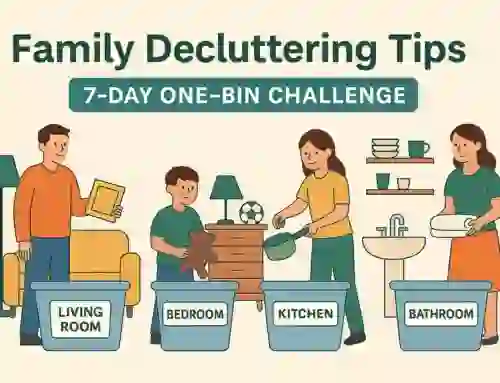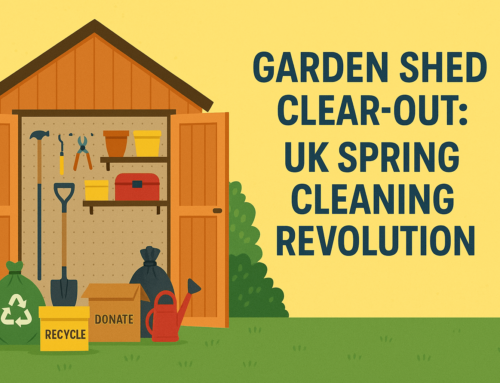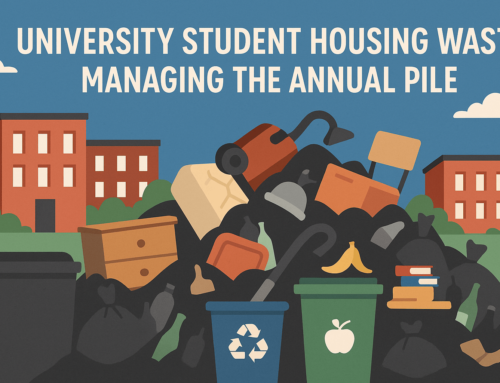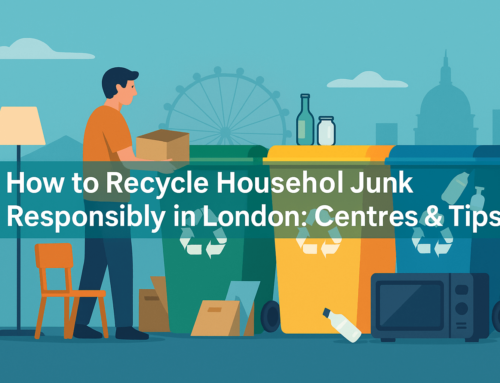The United Kingdom produces around 10 million tonnes of food waste each year. This enormous figure isn’t just about wasted meals—it’s also responsible for nearly 20 million tonnes of greenhouse gas emissions. Understanding the journey of food waste after collection can help us reduce our environmental footprint and build a more sustainable society.
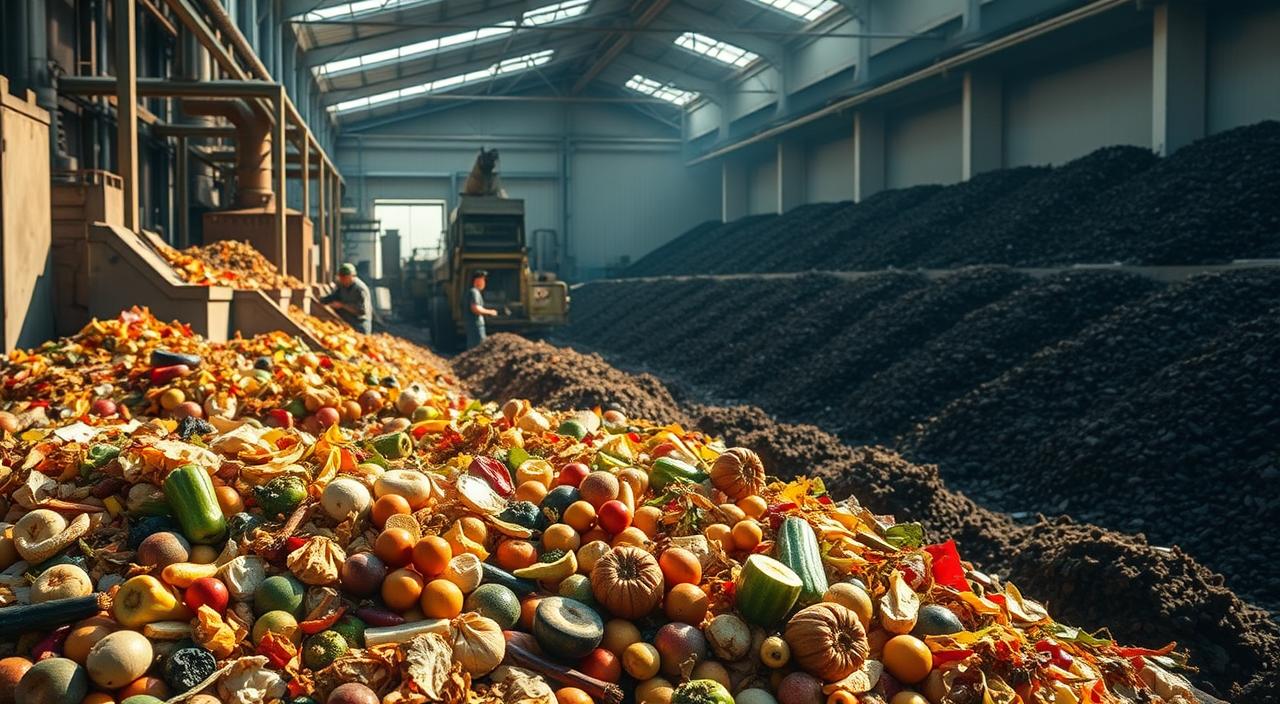
Key Takeaways
- Recycling food waste reduces harmful greenhouse gases like methane.
- Diverting one tonne of food waste avoids 0.6 tonnes of CO₂e emissions.
- Effective waste processing transforms food into energy and fertiliser.
- Proper segregation and disposal support the circular economy.
- New technologies like insect farming offer innovative waste solutions.
The Journey of Food Waste in the UK
Once food waste is collected from homes and businesses, it begins a multi-stage journey that transforms discarded materials into valuable resources like energy and biofertiliser.
Understanding Food Loss vs. Food Waste
It’s important to distinguish between food loss and food waste.
- Food loss happens in production and supply chains.
- Food waste occurs at the consumer or retail level and often includes edible food.
This distinction helps policymakers and industry leaders target specific points in the chain for intervention.
The Scale of the Problem
Food waste in the UK is a pressing issue:
| Sector | Contribution to Waste | Solutions |
|---|---|---|
| Households | High – due to overbuying & spoilage | Meal planning, composting, education |
| Restaurants & Shops | Moderate – excess inventory | Donation networks, portion control |
| Manufacturers | Production-related waste | Process efficiency, reuse & recycling |
With food waste costing the economy £17 billion each year, addressing it is a national priority.
Collection and Sorting Systems
Residential Collection
Households in the UK are typically provided with separate food waste bins. These are collected weekly or bi-weekly by local councils.
Commercial Waste Services
Businesses use specialised containers for organic waste. Licensed waste carriers then collect and deliver this material to treatment facilities.
Food Waste Processing: What Really Happens
Specialised processing centres receive food waste after collection and transform it into usable outputs using various technologies.
Step 1: Depackaging
Machines separate food from its packaging, ensuring that both streams can be recycled efficiently. Packaging materials like plastic are often sent to energy recovery facilities.
Step 2: Quality Control
Technicians screen the organic material to remove contaminants and prepare it for further treatment.
Step 3: Pasteurisation
Before becoming biofertiliser, food waste is pasteurised to eliminate pathogens. This ensures safety when applied to farmland.
| Stage | Purpose | Result |
|---|---|---|
| Depackaging | Remove food from packaging | Organic slurry and recyclable plastics |
| Quality Check | Eliminate unsuitable contaminants | Clean organic feedstock |
| Pasteurisation | Sanitise before land application | Safe biofertiliser for agriculture |
Anaerobic Digestion: Energy from Waste
Anaerobic digestion (AD) is the UK’s leading method for converting food waste into green energy.
How It Works
In oxygen-free tanks, microorganisms break down food waste in stages—hydrolysis, acidogenesis, acetogenesis, and methanogenesis—releasing biogas (mostly methane).
Biogas Applications
- Electricity generation for local grids.
- Biomethane injection into the gas network.
- Vehicle fuel for commercial fleets and buses.
This process helps the UK reduce its reliance on fossil fuels and cut emissions at scale.
Explore how your community can benefit from food waste recycling by visiting Recycle Now – Food Waste
Alternative Processing Methods
As the UK aims to become more sustainable, alternative food waste solutions are growing in popularity.In-vessel composting systems offer a controlled environment for accelerated decomposition, making it ideal for processing not just food scraps but also garden waste removal services.
In-Vessel Composting
This method uses enclosed environments to accelerate decomposition. It produces nutrient-rich compost and prevents odours and pests, making it ideal for urban environments.
Insect Farming: A New Frontier
Species like the Black Soldier Fly can consume large amounts of food waste and convert it into high-protein larvae. These larvae are then used as animal feed, supporting sustainable agriculture.
🡲 Related: 10 Upcycling Ideas That Turn Everyday Waste into Home Décor
Environmental Benefits of Proper Waste Management
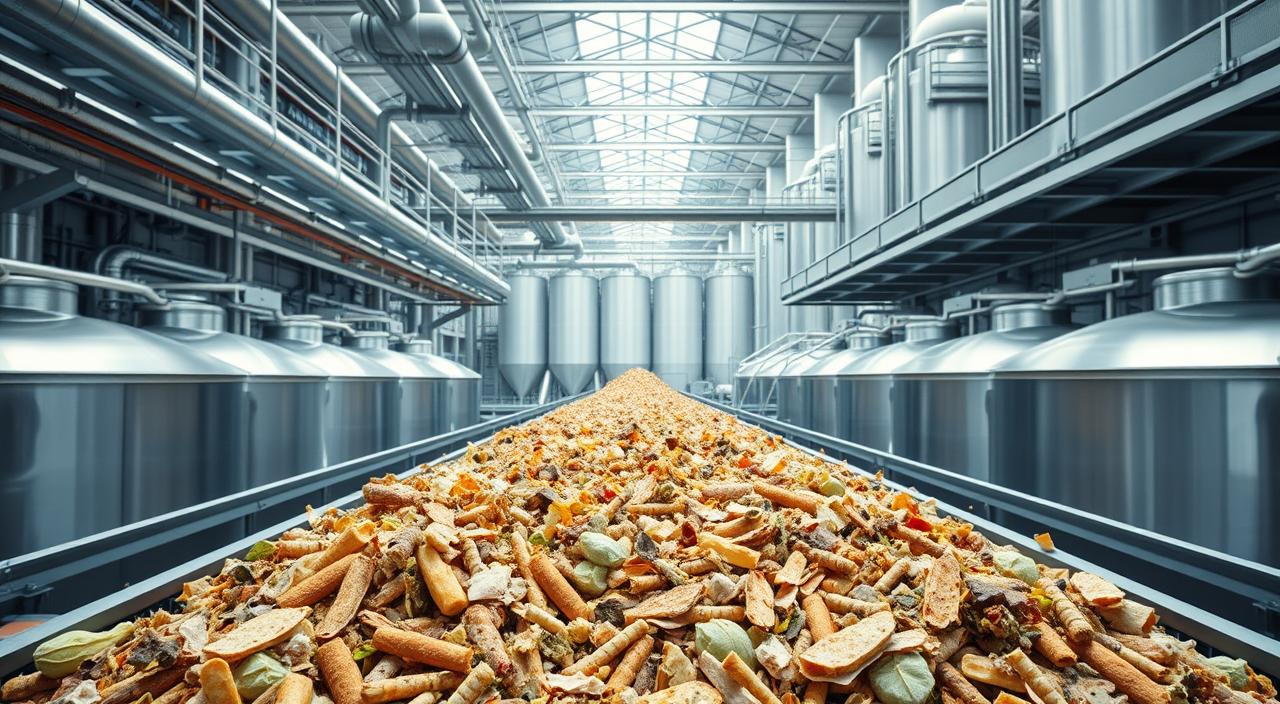
Methane Reduction
When food waste ends up in landfills, it decomposes and produces methane—25 times more potent than carbon dioxide. Recycling it through AD or composting avoids this harmful emission.
Renewable Energy Generation
By recycling food waste, the UK generates renewable electricity and green gas, reducing dependency on fossil fuels.
| Benefit | Description | Impact |
|---|---|---|
| Methane Mitigation | Stops landfill emissions | 0.6 tonnes CO₂e saved per tonne |
| Renewable Energy | Electricity and gas from food waste | Powers homes and vehicles |
| Soil & Water Protection | Prevents toxic leachate from landfills | Protects local ecosystems |
What Types of Food Waste Are Accepted?
Our processing facilities can handle a wide variety of food waste types:
- Residential: Kitchen scraps, plate leftovers, expired items
- Commercial: Restaurant waste, supermarket returns, factory surplus
- Category 3 By-Products: Animal by-products suitable for specific uses
This flexibility allows us to serve local councils, businesses, and manufacturers efficiently.
The Economic Value of Recycling Food Waste
Cost Savings for Businesses
Landfill tax increases every year. By switching to food waste recycling, businesses can avoid these rising fees and improve their waste budgets.Beyond food waste, even packaging and non-organic items can be reused creatively—see our guide on upcycling home décor ideas to explore sustainable reuse at home.
New Revenue Streams
Food waste is a resource. Once processed, it generates products like:
| Waste Type | Product | Estimated Value per Tonne |
|---|---|---|
| Organic Waste | Biogas | £50 |
| Factory Waste | Animal Feed | £30 |
| Used Cooking Oils | Biodiesel | £70 |
By creating value from waste, companies not only reduce environmental impact but also improve their bottom line.
Conclusion: Building a Greener Future Together
Recycling food waste isn’t just a compliance requirement—it’s a powerful way to create a circular economy and reduce the environmental impact of our daily habits.
By understanding what happens to food waste after collection and supporting innovative solutions, we can transform a national challenge into a sustainability success story.
If you’re a local authority, restaurant, or business seeking a food waste solution, we invite you to join the growing movement toward responsible waste management.
